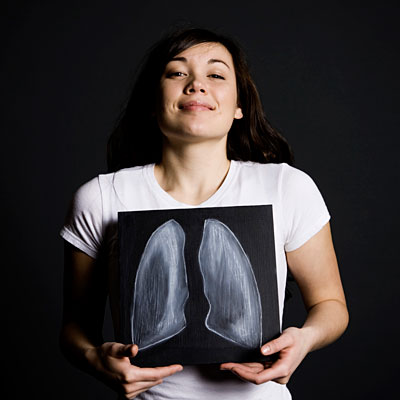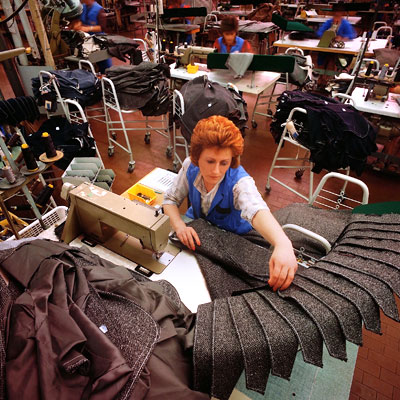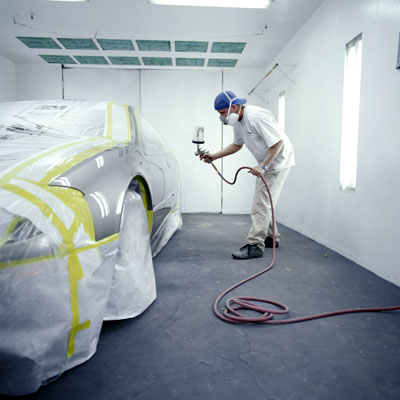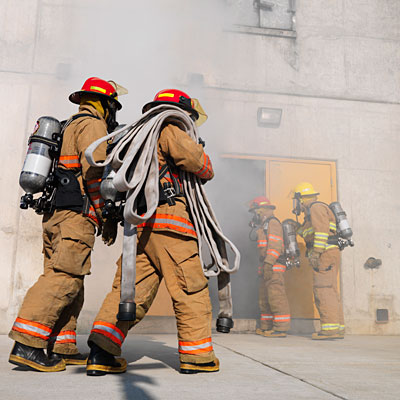Nearly 23,000 workers developed job-related lung disease in 2008, the U.S. Department of Labor estimates. More than 16,000 people die from it each year.
But most types of occupational lung disease are preventable, says Philip Harber, MD, professor and chief of the UCLA Occupational and Environmental Medicine Division. "Simple control measures can markedly reduce exposure and the risk," he says.
Here are 10 fields that can be risky for your lung health.
Construction
Workers who inhale dust in demolitions or renovations can be at risk for lung cancer, mesothelioma, and asbestosis, a disease that causes scarring and stiffening of lungs.
"We worry about people with exposure 20 to 30 years ago," Dr. Harber says, when many products containing asbestos were not banned.
Wearing protective gear, including a respirator, when working around older buildings and avoiding smoking can help.
Manufacturing
Factory workers can be exposed to dust, chemicals, and gases, placing them at risk for COPD.
In food plants, diacetyl—a flavoring agent used in microwave popcorn, some wines, and fast foods—can cause a devastating and sometimes deadly disease called bronchiolitis obliterans, a close relative of COPD.
The good news? Taking some easy steps can significantly reduce your risk. "Something as simple as when you put diacetyl into a giant pot to mix it, put the lid on and wear a filtering mask," Dr. Harber says.
Health care
An estimated 8% to 12% of health-care workers are sensitive to the powder residue found in latex gloves, which can cause a severe asthma-type reaction.
"Even if you're not using [latex gloves], when I put mine on and take them off in the same room, little bits of latex get in the air and people become allergic to it," Dr. Harber says.
Limiting exposure whenever possible can help. But for doctors and nurses, skipping the use of protective gloves is not always an option. In severe cases, Dr. Harber says, a latex allergy can end careers. Some hospitals like Johns Hopkins have switched to latex-free synthetic gloves.
Textiles
Byssinosis, also called brown lung disease, is common among textile workers who make upholstery, towels, socks, bed linens, and clothes.
Workers can inhale particles released from cotton or other materials. "When cotton is ripped apart, it creates huge amounts of dust and can cause significant airflow obstruction," Dr. Harber says.
Smoking increases the risk. Wearing a mask and improving ventilation in the work environment can be beneficial.
Bartending
Serving drinks in a smoke-filled room puts bartenders at high risk for lung disease, especially if they are regularly exposed to second-hand smoke over many years.
Today, many states outlaw smoking in restaurants and bars, which has made a significant difference in the health of people working in this field. According to Dr. Harber, studies show that respiratory health among bartenders in cities with smoking bans has dramatically improved.
If you work in a city that still allows smoking in bars, a good ventilation system can.
Baking
Baking is near the top of the list of asthma-provoking jobs, which altogether account for an estimated 15% of new asthma cases in adults. "Bakers who are exposed to flour dust are at very significant risk of developing allergic sensitization," says Dr. Harber.
An asthmatic reaction to enzymes used to alter the consistency of dough, as well as allergens shed by bugs, such as beetles, moths, and weevils, often found in flour, is common as well.
Good ventilation and the use of a protective mask can help prevent illness.
Automotive industry
Occupational asthma can be a risk for those in the automobile industry, particularly auto-body repair.
Auto spray-on paints, such as isocyanate and polyurethane products, can irritate skin, create allergies, and cause chest tightness and severe breathing trouble.
"Minor amounts of isocyanates can trigger an asthma attack once you become sensitized to it," Dr. Harber says. "Maybe 5% of spray painters become sensitized. But if you're in the unlucky 5% and get attacks, you can't be around it at all."
Respirators, gloves, goggles, and ventilation can help.
Transportation
Delivery truck drivers, those who unload merchandise on loading docks, and railroad industry workers can be at risk for COPD. Diesel exhaust is the biggest factor.
A 2004 study found a link between higher lung cancer death rates among U.S. railroad workers after the industry switched from coal to diesel-power in the 1950s.
Although engines now emit less diesel exhaust due to improvements and use cleaner-burning diesel fuel, diesel exhaust is still widespread. Staying out of the direct line of diesel exhaust and wearing protective masks help reduce the risk of lung disease.
Mining
Miners are at high risk for a number of lung diseases, including COPD, because of dust exposure, Dr. Harber says. Airborne silica, also known as quartz, can lead to silicosis, a disease that scars lungs.
Coal miners are at risk for another type of lung-scarring disease called pneumoconiosis (black lung). Years of exposure to coal dust is the culprit.
Not smoking and using dust-filtering masks can help
Firefighting
Firefighters can inhale smoke and a wide range of chemicals that may be present in a burning building.
Although the breathing apparatus does a good job of protecting them, it isn't always worn, especially during the so-called overhaul phase, when firefighters sift through debris to ensure that the fire doesn't reignite.
Exposure to toxic materials and asbestos is a risk even after the fire is out, and the International Association of Firefighters recommends wearing respiratory protective equipment at all stages of firefighting.
source : health.com



 Admin on
Admin on  10:50 PM
10:50 PM


















0 komentar:
Post a Comment